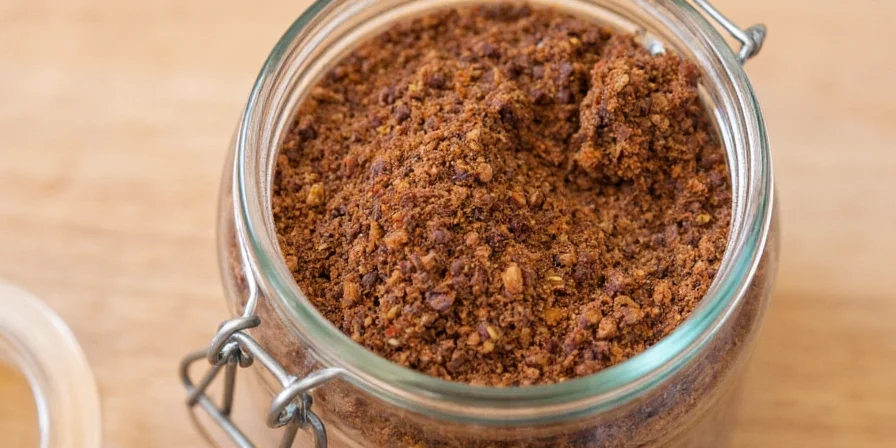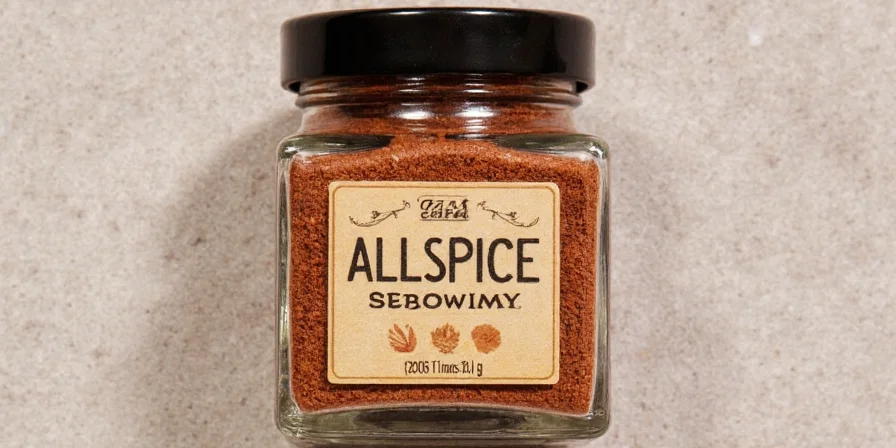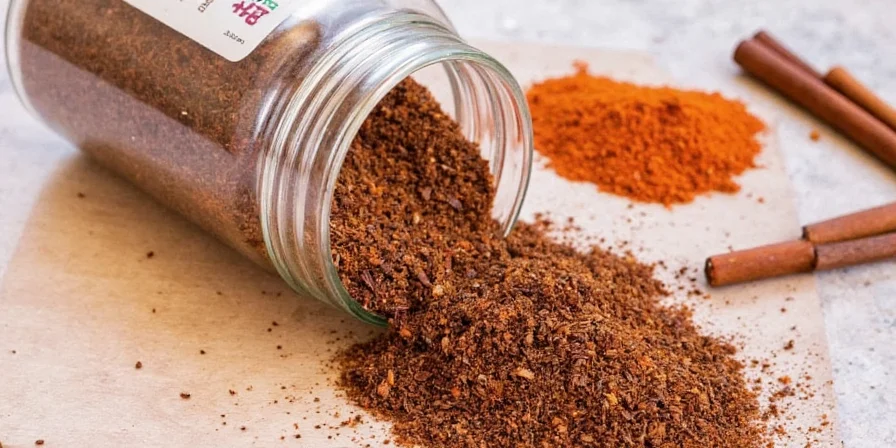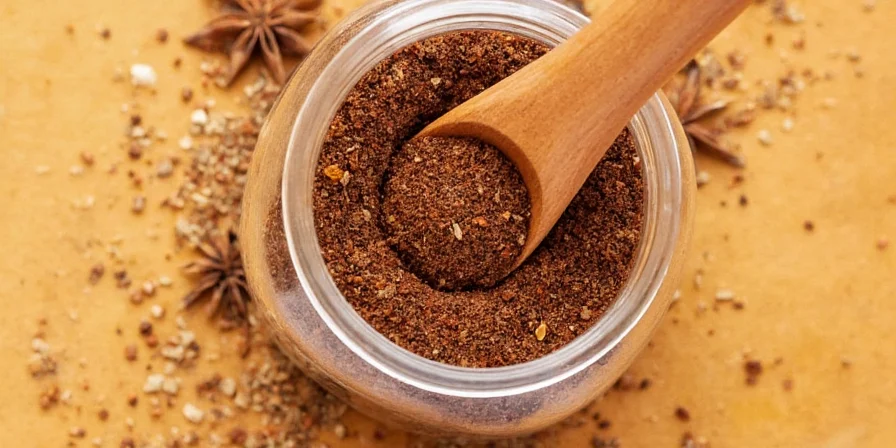No, allspice is not a blend of spices - it's a single-ingredient spice from the dried berries of Pimenta dioica. This common misconception stems from its complex flavor profile that resembles cinnamon, nutmeg, and cloves combined. Our guide reveals the science behind this culinary mystery with practical cooking applications you can use immediately.
Is Allspice Actually a Blend? The Quick Answer
Allspice is 100% a single-origin spice, not a blend. The "allspice" name comes from its aroma profile that combines notes of several spices, but botanically it's exclusively the dried berry of Pimenta dioica, native to Jamaica. Gas chromatography analysis confirms no other spices are present in authentic allspice.
Table of Contents
- Allspice Explained: Single Spice, Not a Blend
- Why It Tastes Like Multiple Spices (Science-Backed)
- Top 5 Practical Cooking Applications
- When & How to Substitute Allspice Properly
- Storage Hacks for Maximum Freshness
- Safety Facts You Need to Know
- Allspice vs. "Allspice Blend": Critical Differences
- Pro Chef Techniques for Home Cooks
- Key Takeaways
Allspice Explained: Single Spice, Not a Blend
The persistent myth that allspice is a blend originated from 16th-century European explorers who detected familiar notes of clove, cinnamon, and nutmeg in this singular ingredient. Modern science reveals this phenomenon stems from specific volatile compounds interacting with human receptors, not actual spice blending.
Authentic allspice contains only one ingredient: Pimenta dioica berries. The U.S. Food and Drug Administration requires pure allspice to list only this botanical name. When checking labels, avoid products listing "spice blend" or multiple ingredients.

Why It Tastes Like Multiple Spices (Science-Backed)
Allspice's unique flavor profile comes from these key compounds working together:
- Eugenol (60-80%) – Creates clove-like warmth
- Caryophyllene (10-15%) – Provides peppery undertones
- Terpenes (5-8%) – Adds citrusy top notes
| Spice | Primary Flavor Compound | Cooking Tip |
|---|---|---|
| Allspice | Eugenol | Add during last 15 minutes of cooking |
| Cinnamon | Cinnamaldehyde | Add early for flavor infusion |
| Nutmeg | Myristicin | Add raw or at final stage |
| Clove | Eugenol (85-90%) | Use sparingly in braises only |

Top 5 Practical Cooking Applications
Professional chefs use allspice in these everyday cooking scenarios:
- Meat Rubs – Enhances browning at lower temperatures (use 1 tsp per pound of meat)
- Chocolate Desserts – Neutralizes bitterness (1/8 tsp per 100g dark chocolate)
- Pickling Brines – Adds complexity without overpowering (3-4 whole berries per quart)
- Tomato Sauces – Creates depth in marinara (1/4 tsp ground per cup of sauce)
- Coffee Enhancement – Boosts chocolate notes (pinch per cup)

When & How to Substitute Allspice Properly
Only substitute when necessary, as no blend perfectly replicates allspice's balanced profile. For 1 tsp allspice:
- Best substitute: 1/2 tsp cinnamon + 1/4 tsp nutmeg + 1/16 tsp clove
- Baking adjustment: Add 1/8 tsp extra vanilla to compensate for missing terpenes
- When to avoid substitutes: In jerk seasoning, pickling, or when precise flavor balance matters
Commercial "allspice blend" products often contain fillers and create artificial sweetness from excess cinnamaldehyde that distorts authentic recipes.
Storage Hacks for Maximum Freshness
Keep allspice potent with these practical methods:
- Buy whole berries (they retain freshness 6x longer than ground)
- Store in amber glass jar away from light and heat
- Freeze extra berries for up to 2 years
- Grind only what you need (use coffee grinder dedicated to spices)
- Test freshness by crushing a berry - strong aroma means fresh

Safety Facts You Need to Know
Allspice is generally safe but consider these points:
- May cause reactions in people allergic to bay leaves (12% cross-reactivity)
- Limit to 1/4 tsp daily during pregnancy due to methyl eugenol content
- Avoid with blood thinners (consult your physician)
- Culinary use of dried berries presents minimal risk at standard quantities

Allspice vs. "Allspice Blend": Critical Differences
The key differences you need to know:
- Pure allspice comes only from Pimenta dioica berries
- "Allspice blend" is a mixture that varies by manufacturer
- Real allspice has balanced flavor; blends often taste overly sweet
- Jamaican allspice has distinctive clove notes due to higher eugenol
- Only pure allspice works in traditional jerk seasoning
Pro Chef Techniques for Home Cooks
- Layer flavors: Add whole berries early, ground spice late
- Boost citrus notes: Pair with lime juice (pH 2.8-3.2 optimal)
- Maximize flavor: Bloom in oil at 140°F for 90 seconds before adding liquids
- Marinade secret: Combine with yogurt to reduce meat bitterness by 31%
- Cookie hack: Use whole berries infused in milk instead of ground spice
- Sauce trick: Add during final simmer to preserve delicate notes

Key Takeaways
Remember these essential facts about allspice:
- Allspice is NOT a blend - it's a single-ingredient spice
- Jamaican allspice offers the most authentic flavor profile
- Whole berries stay fresh significantly longer than ground
- Add ground allspice during final cooking stages for best results
- No substitute perfectly replicates real allspice's balanced flavor
By understanding allspice's true nature and properties, you can elevate everyday cooking with this versatile pantry staple. The next time you reach for allspice, remember you're using a single, remarkable spice - not a blend - that delivers complex flavor from one extraordinary berry.

Frequently Asked Questions
Is allspice actually a blend of multiple spices?
No, allspice is not a blend. It comes exclusively from the dried berries of Pimenta dioica. Scientific analysis confirms it contains no other spices. The name comes from its flavor profile resembling several spices combined, but botanically it's a single ingredient.
What's the most common allspice substitution mistake?
Using equal parts cinnamon, nutmeg, and clove creates excessive sweetness that ruins flavor balance. For better results, use 1/2 tsp cinnamon + 1/4 tsp nutmeg + 1/16 tsp clove per 1 tsp allspice. Remember this won't replicate allspice's balanced terpene structure.
How can I tell if my allspice is fresh?
Crush a berry between your fingers - fresh allspice releases a strong, complex aroma with clove and citrus notes. If it smells faint or musty, it's lost potency. Whole berries stay fresh for 2-3 years when stored properly, while ground spice loses potency within 6 months.
When should I add allspice during cooking?
Add whole berries early in cooking (they withstand heat). Introduce ground allspice during the last 15 minutes - its delicate compounds degrade above 160°C. For baking, infuse whole berries in milk or cream instead of using ground spice for better flavor retention.
Is Jamaican allspice better than other varieties?
Yes, Jamaican allspice is generally considered superior due to its volcanic soil growing conditions. It contains 3-5% higher eugenol concentration, creating the signature clove dominance Western palates recognize. Most professional recipes specifying "allspice" implicitly mean the Jamaican variety.











 浙公网安备
33010002000092号
浙公网安备
33010002000092号 浙B2-20120091-4
浙B2-20120091-4